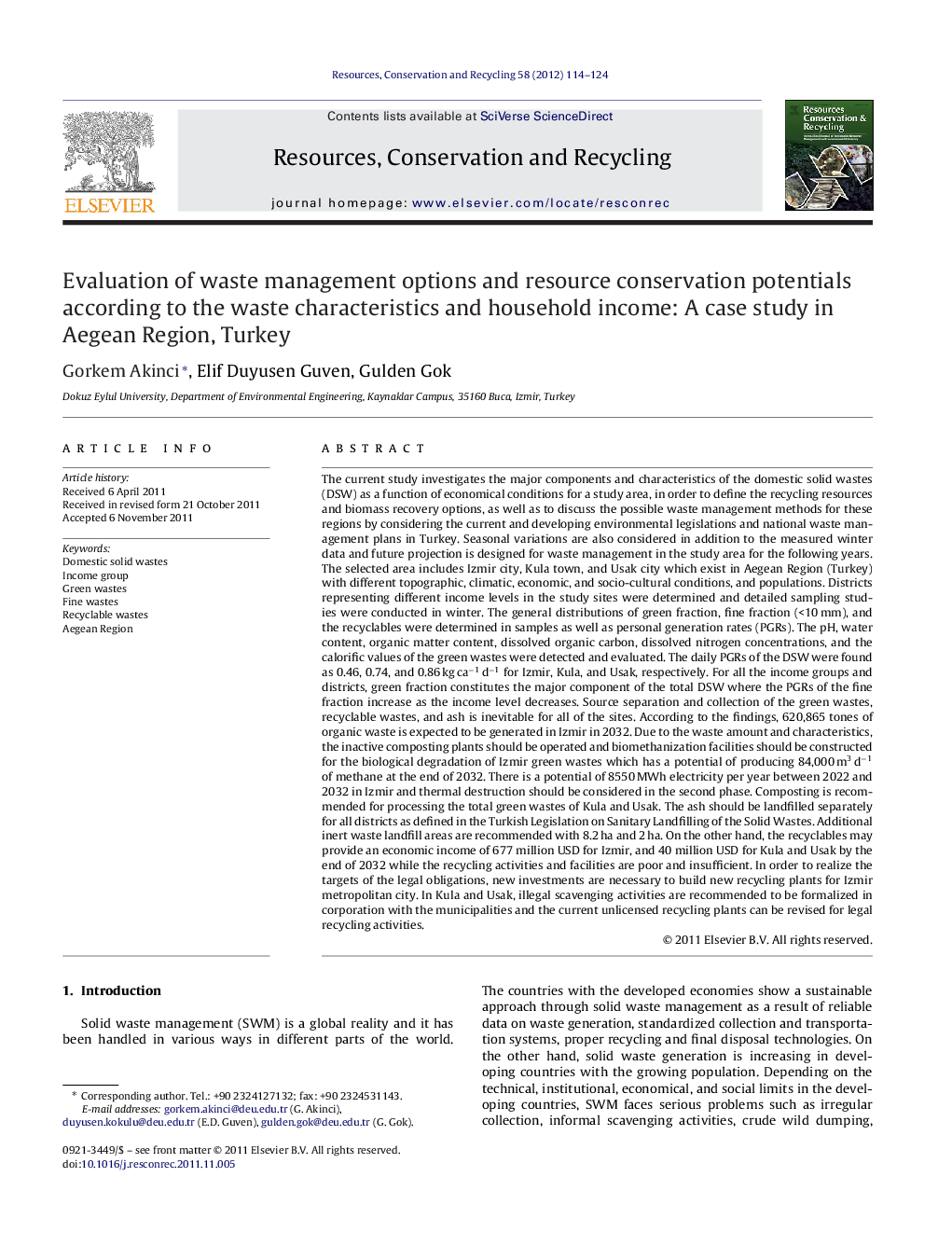| Article ID | Journal | Published Year | Pages | File Type |
|---|---|---|---|---|
| 1063485 | Resources, Conservation and Recycling | 2012 | 11 Pages |
The current study investigates the major components and characteristics of the domestic solid wastes (DSW) as a function of economical conditions for a study area, in order to define the recycling resources and biomass recovery options, as well as to discuss the possible waste management methods for these regions by considering the current and developing environmental legislations and national waste management plans in Turkey. Seasonal variations are also considered in addition to the measured winter data and future projection is designed for waste management in the study area for the following years. The selected area includes Izmir city, Kula town, and Usak city which exist in Aegean Region (Turkey) with different topographic, climatic, economic, and socio-cultural conditions, and populations. Districts representing different income levels in the study sites were determined and detailed sampling studies were conducted in winter. The general distributions of green fraction, fine fraction (<10 mm), and the recyclables were determined in samples as well as personal generation rates (PGRs). The pH, water content, organic matter content, dissolved organic carbon, dissolved nitrogen concentrations, and the calorific values of the green wastes were detected and evaluated. The daily PGRs of the DSW were found as 0.46, 0.74, and 0.86 kg ca−1 d−1 for Izmir, Kula, and Usak, respectively. For all the income groups and districts, green fraction constitutes the major component of the total DSW where the PGRs of the fine fraction increase as the income level decreases. Source separation and collection of the green wastes, recyclable wastes, and ash is inevitable for all of the sites. According to the findings, 620,865 tones of organic waste is expected to be generated in Izmir in 2032. Due to the waste amount and characteristics, the inactive composting plants should be operated and biomethanization facilities should be constructed for the biological degradation of Izmir green wastes which has a potential of producing 84,000 m3 d−1 of methane at the end of 2032. There is a potential of 8550 MWh electricity per year between 2022 and 2032 in Izmir and thermal destruction should be considered in the second phase. Composting is recommended for processing the total green wastes of Kula and Usak. The ash should be landfilled separately for all districts as defined in the Turkish Legislation on Sanitary Landfilling of the Solid Wastes. Additional inert waste landfill areas are recommended with 8.2 ha and 2 ha. On the other hand, the recyclables may provide an economic income of 677 million USD for Izmir, and 40 million USD for Kula and Usak by the end of 2032 while the recycling activities and facilities are poor and insufficient. In order to realize the targets of the legal obligations, new investments are necessary to build new recycling plants for Izmir metropolitan city. In Kula and Usak, illegal scavenging activities are recommended to be formalized in corporation with the municipalities and the current unlicensed recycling plants can be revised for legal recycling activities.
► A two phase future planning for the waste management in Izmir, Kula, and Usak is prepared in this study in order to define possible recycling resources and resource conservation aspects by considering the income levels and waste properties. ► There is a potential of 84,000 m3 d−1 methane production at the end of 2032 and a potential of 8550 MWh electricity per year by incineration between 2022 and 2032 in Izmir. ► When separately evaluated, the recyclables provide an economic income of 677 million USD for Izmir, and 40 million USD for Kula and Usak.
